Back from the brink: how Sierra Leone is recovering from Ebola
NOTE: This article is more than five years old, but may still be relevant. For more recent content, see our latest stories from the field.
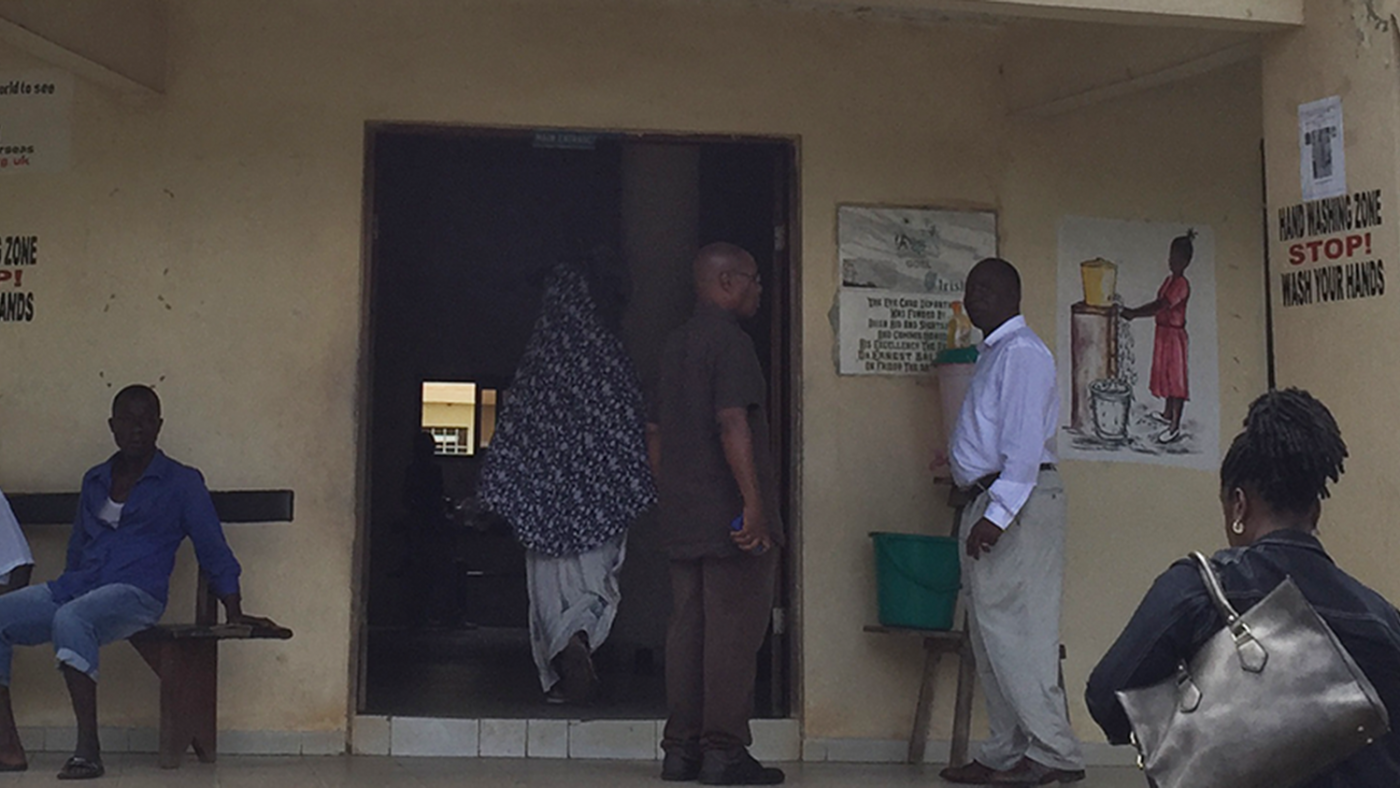
“I don’t think we’ll ever really understand what it was like through those awful days”
Sightsavers CEO Dr Caroline Harper reports from her recent visit to Sierra Leone to see how eye care services and health workers have been coping since the Ebola virus devastated the country.
At Kenema hospital, some four hours’ drive from Freetown, there stands a monument to 34 health workers who lost their lives during the Ebola crisis in Sierra Leone. It is beautifully kept, with flowers and photos, but is a sobering reminder of the bravery shown during those terrible times.
More than 3,500 people are known to have died from Ebola in Sierra Leone – although that is probably an underestimate. Some 4,000 people survived, but the virus has left its mark. More than half of them have eye problems, while the stigma attached to being a survivor blights lives.
Ebola took hold here, and in Guinea and Liberia, because of a weak health system. The loss of so many health workers has damaged it further, so the question is by how much, and is it recovering? I went to Sierra Leone in September 2016 to see how the country is faring now it has been declared Ebola free, and in particular to find out how Sightsavers staff and partners were coping.
I had not forgotten speaking to our Country Director, Nancy Smart, when the crisis was at its height. The palpable fear there, together with the practical difficulties associated with food shortages and increasing prices, combined to make this a very testing time. A sick child was no longer cuddled and comforted but put into a separate room while parents hoped and prayed it was a common fever. Malaria, a dreadful killer itself, was suddenly greeted with relief that it was not Ebola.
I don’t think we will ever really understand what it was like for our staff and our partners through those awful days – but I would like to honour their bravery and determination, and was really impressed by what I saw.
Sightsavers has worked in Sierra Leone for nearly 60 years. We have seen trouble before – working as we did throughout the civil war, when our then Country Director Dr Dennis Williams at times dodged bullets and hid from machete-wielding fighters. The last time I came (in 2006) the country was recovering from war and there was a sense of optimism – so the Ebola crisis was particularly cruel.
The road ahead
As such a long standing partner we have close relationships with the various Ministries. I met the Minister of Health and Sanitation and the Minister of Education, and it was clear that both are totally committed to their departments and the task they face.
Sierra Leone has a total of 90 eye health workers (to support a population of around 6.4 million people), and more than 90 per cent of them were trained with support from Sightsavers, thanks to funding from Irish Aid, the European Commission and Standard Chartered. More are currently being trained, but there will still not be nearly enough. There is ONE optometrist! A shortage of eye health workers is one of the biggest barriers holding back the health system.
Other challenges in Sierra Leone
There is another, more mundane issue which gets in the way, and that is the condition of the roads. The main arteries between Freetown and Bo, and the more recently constructed one between Bo and Kenema, were fine. But once off these, the roads are treacherous and as bad as anything I have seen anywhere. It rains for five months of the year, and the potholes almost become sinkholes. Even an SUV struggles to navigate them.
At Kenema there is an eye unit, built with the generous support of the Irish people care of Irish Aid. It is well equipped, and has two cataract surgeons. It even has access to an anaesthetist so paediatric surgery is possible. The big challenge is how the people get to the hospital. I visited a health centre in Kalia a few miles away, where the team were doing outreach. The waiting room was full – particularly with children. Some had very simple conditions – one little boy had a case of allergic conjunctivitis where his eyes were streaming and red, and he was in considerable discomfort. A course of antihistamine eyedrops would cure this in a week, but he had been suffering for three years… A small girl was held by her mother, one eye clearly blind and the other with a bad squint. She had been to the clinic before, but when told to go to Kenema hospital she had just left.
A good outlook
The Sierra Leone eye care programme is definitely recovering. I met several health workers who were determined to build up services – including support to people struggling with uveitis (an inflammation of the middle layer of the eye that has been reported in as many as 60 per cent of Ebola survivors), which can lead to visual impairment. I visited the Connaught hospital in Freetown itself, which was teeming with patients. Ebola meant that far more stringent infection control procedures were brought in, and remain even now, which is a silver lining to a very dark cloud.
Our efforts here are supported by donors who have stuck with us over many years (notably the Irish government, the European Commission and Standard Chartered). We have a network of volunteer community drug distributors who are reaching full geographic coverage in the river blindness programme (working particularly with Helen Keller International).
Leave no one behind
I expected to see a depressed team both at Sightsavers and the Ministry, but nothing could be further from the truth. They were all energised and full of enthusiasm for the task ahead. While I was in Sierra Leone we signed a new funding agreement with the EC – this time for inclusive education. Bringing education to more children with disabilities is fundamental to the achievement of the Sustainable Development Goals, with their focus to ‘leave no one behind’, and Sierra Leoneans have played a leading role in advocating for disability to be prominent in the SDGs. So it was particularly good to be there while this new grant was signed.
In short, this visit was both sobering and uplifting. Sobering to see the level of sacrifice made, and the challenges still faced by the country. And to see the number of people, particularly children, who were suffering from painful or blinding eye conditions for want of access to services. But uplifting because this is a country that has definitely come back from the brink of despair, and whilst much remains to be done, there are Sierra Leoneans who are determined to deliver. With support, I’m sure they will continue to do so.
Author
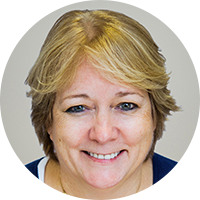 Dr Caroline Harper
Dr Caroline Harper
Caroline is chief executive of Sightsavers. Under her leadership, the organisation has expanded significantly, treating millions of people and advocating for policy reforms around the world.
Want to read more about our work?
Sightsavers and disability rights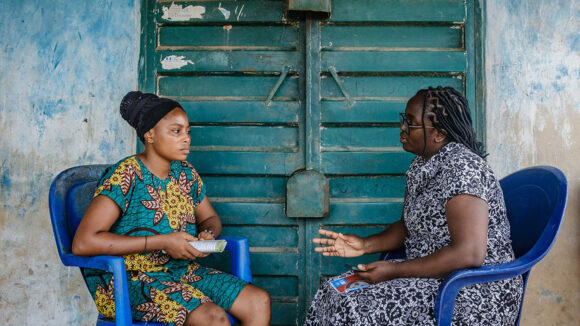
Why community collaboration is important in our research
Our research on female genital schistosomiasis has highlighted the need to establish a safe and supportive environment for participants when studying sensitive topics.
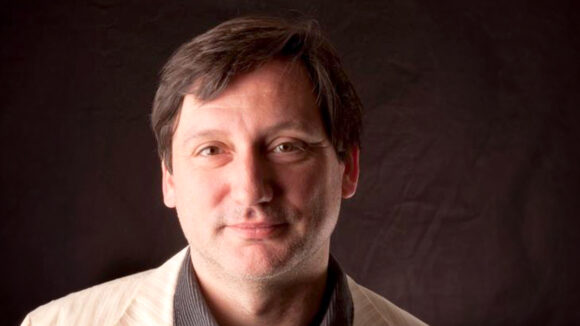
The key to inclusive education is engaging organisations of people with disabilities
Collaborating with organisations of people with disabilities (OPDs) on our inclusive education projects has earned the Sightsavers-led Inclusive Futures consortium a Zero Project Award in 2024.
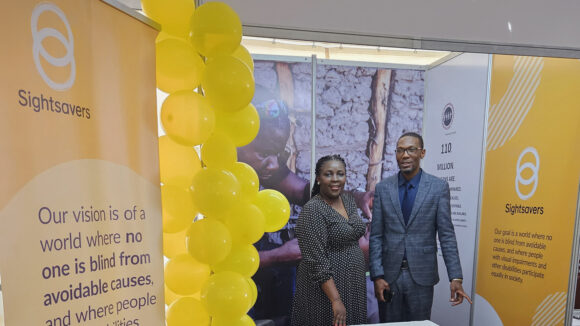
Six takeaways from the International Conference for Public Health in Africa
Sightsavers’ Hortance Manjo shares insights from the event in Zambia, which highlighted eye health for the first time.